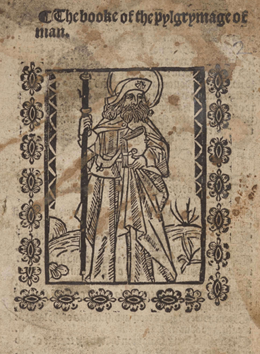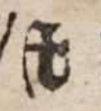Week III marked something of a beginning. To characterize the third of a six-week long internship as a ‘beginning’ moment seems, of course, somewhat absurd. But it was indeed a pivotal instance: it was the moment we encountered the complete sammelband for the first time, the point at which we decided upon our own independent projects and, perhaps, the occasion wherein we each took a first, tentative step into the world of public, independent academic research.
The usual ‘Code-a-Thon Coffee Morning’ heralded the start to another exciting week and, on the morning of so-called ‘Freedom Day’, it felt particularly apt that our encoding challenge would come in the form of an NHS vaccine card. Having only previously encountered more straightforward literary texts, the vaccine card presented a somewhat unique challenge and forced us to confront two key questions. The first, perhaps unsurprisingly, was how – how could we transfer our encoding skills from tackling the structural rigidity of printed verse and prose to the somewhat disjointed and unfamiliar arrangement of various columns and rows of information (either printed, handwritten, or stamped) that sat before us?
The initial effort was relatively straightforward: to encode the information in a familiar line-by-line configuration. Once we had produced this foundational code, it could then be enhanced with various necessary formatting elements and navigable functions. Bold text, colour and drop caps could each be rendered used the <hi> tag to specify graphically distinct elements, while variable information unique to each card could be indicated using primarily <name>, <date> and <seg> tags for signification and subsequent navigation.

Yet perhaps the key challenge presented in the form of the various hands used upon the card. The ‘base’ copy was produced in print, elements such as ‘patient name’ were handwritten while ‘name of vaccine’, ‘date given’ and ‘batch number’ were all stamped. We decided it necessary to distinguish between each hand and thus, under the guidance of seemingly-omniscient tutors in TEI Mary Newman and Sebastian Dows-Miller, we resolved upon two appropriate tags: <add hand=x>, with which the three hands could be separately specified within the TEI header, or <handShift>, which would allow for the indication of an unspecified base hand to be deviated from. These particular functions in .xml code – I’m sure my colleagues would agree – proved extremely useful as the week progressed.
The second question we were forced to address was why – why would anyone find use in the encoding of a vaccine card in the first place? Our discussion proved enlightening; it was perhaps the first moment whereby I came to appreciate the vast possibilities open to researchers across all disciplines through the appropriation of the tools of digitization. The argument for historical preservation is, of course, a profound one. But the transference from paper to navigable digital form permits inquiry on a potentially huge – yet entirely accessible – scale. Suggested possibilities ranged from medical research involving the cross-referencing of information stored on NHS patient databases with that manually produced, to graphics teams investigating document spacing to ensure overlapped ink does not obscure key information (to name just two). The encoding was not merely an exercise that improved our proficiency working with XML but one that forced us to consider the wider benefits in harnessing the tools of digitization.
It was the Monday afternoon session wherein we encountered the sammelband as a group for the first time, tasked with identifying individual pamphlets that would form the basis of our own digital editions. The sammelband itself is a curiously-eclectic assortment of pamphlets linked by a predominant devotional thread but also complete with a pedagogical manual teaching children phonetics. It is testament to the range of interests within our small group that each member was drawn to research on a separate pamphlet. Given my own interest in the remnant and recusant cultures of late medieval/early modern Catholicism in England, I decided upon one of the more theologically-focused pamphlets: ‘the booke of the pilgrimage of man’. The pamphlet itself, comprised of beautiful, rhymed septet verse, depicts the spiritual journey of man from creation through to the birth of Christ and beyond in various ‘ayges of mankynde’.

Queen’s College, Sel.d.81 (2), fol. a1r
By far the biggest challenge of this week came next with the beginnings of transcription. The initial task was to decide upon the nature of our own transcription: diplomatic, critical, or somewhere there between. There were merits to be found at either pole. Transcription with direct palaeographical accuracy would be of most benefit to research with a sharper linguistic edge, while transliteration of characters less familiar in modern consumption would be of greater value to research more inclined towards thematic analysis. Prospective audience was the essential consideration here. For my own project, I decided that the edition should be poised with a slightly greater emphasis towards content in an attempt to preserve the text’s prosody and reconcile it with its theological context. Thus, I decided to preserve characters that existed within standardized modern Unicode (i.e. preserving ‘u’ in place of ‘v’ and vice versa) while those that required specialised Unicode would be transliterated into an alternative (i.e. replacing the ‘long s’ with the modern standard ‘s’).
The use of ‘Transkribus’, a relatively recent development in software that appropriates the power of artificial intelligence to digitally transcribe historical documents, was suggested as a tool that could perhaps bear the full weight of transcription. However, given my own pamphlet was comprised of around just 25 folios, I decided that manual transcription would provide a good opportunity to become more intimately acquainted with the text. The process was tough. One learns rather quickly that an understanding of the wider semantic context becomes essential: the material similarity of characters and the enduring presence of symbols entirely foreign – the popular ‘Tironian note’, for instance – are rendered all the more unintelligible at first glace when the wider semantics are unknown. Yet the myopic vision one must initially maintain during manual transcription in order to ensure high levels of accuracy predicates an easy neglect of these very semantic threads. Particularly for those new to the transcription of historical documents, there certainly seems an appropriate median to be struck between automated process and manual transcription to reconcile context with type at an early stage.
It was, however, in the transcription of standard Latin print – the place at which I had anticipated feeling most comfortable – that proved particularly taxing. It is quite remarkable how, despite your own determined assiduity in reading a ‘v’ as ‘u’ or an ‘f’ as an ‘s’, straightforward words seem stubbornly insistent upon an entirely foreign shape until you methodically substitute each character for its modern alternative. Nonetheless, I did find such systematic transcription an increasingly rare process as I progressed through the text. Manual transcription is indeed a process that quickly becomes easier as familiarity with characters develops and the broader semantic contexts become less obscure.

The final session of the week involved Henrike Lähnemann and Sebastian Dows-Miller displaying the complete sammelband live from Queen’s College Library. The opportunity to encounter the text hitherto only seen via facsimile was extremely welcome and provided an essential means to interrogate more nuanced aspects of the pamphlets and the sammelband as a whole. During my own transcription I had noticed that a considerable amount of marginalia was missing from the edge, probably due to the printer trimming the pamphlet to fit in with the other six. It was only during this session that that this providential detail could be confirmed. Moreover, while virtual constraints prevented us from interacting with the text to the fullest extent, to be able to encounter the sammelband (almost) in-person was a necessary reminder of the fundamental materiality of a text that we had only previously encountered through the sometimes dissociative PDF facsimile.

Week III was a beginning in many ways. Not only was it our first encounter with the sammelband, it marked a potentially pivotal moment in each of our academic lives. Hitherto our intellectual curiosity and independent research had largely been devoted to essays for undergraduate study or private projects. But in working towards a potentially publishable project, things felt different. Perhaps one day, Week III of the UNIQ+ project will feel somewhat momentous in our academic careers – a moment whereby intellectual curiosity and directed study metamorphosized into the beginnings of directed, public and hopefully meaningful academic research.